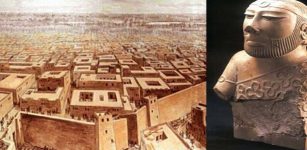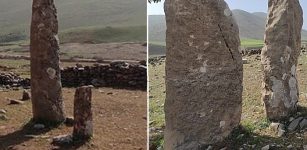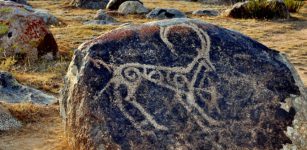Calçoene –Amazon Stonehenge And The Mysterious Amapán Megalithic Culture
Ellen Lloyd – MessageToEagle.com – In the distant past, people in Brazil raised fascinating megalithic structures that are still shrouded in mystery. One intriguing monument is Calçoene, also called the Amazon Stonehenge.
The true purpose of this structure remains unknown. It could have been used as an ancient astronomical observatory, for burial purposes or perhaps even both.
Discovery of the Amazon Stonehenge
Megalithic structures in Amapá state, Brazil, near the city of Calçoene were first reported by naturalist Emilio Goeldi. While exploring the region, he noticed settings of upright stones in the late 19th century.
At this site, archaeologists have uncovered a number of fascinating artifacts that could shed more light on the mysterious Amapán people.
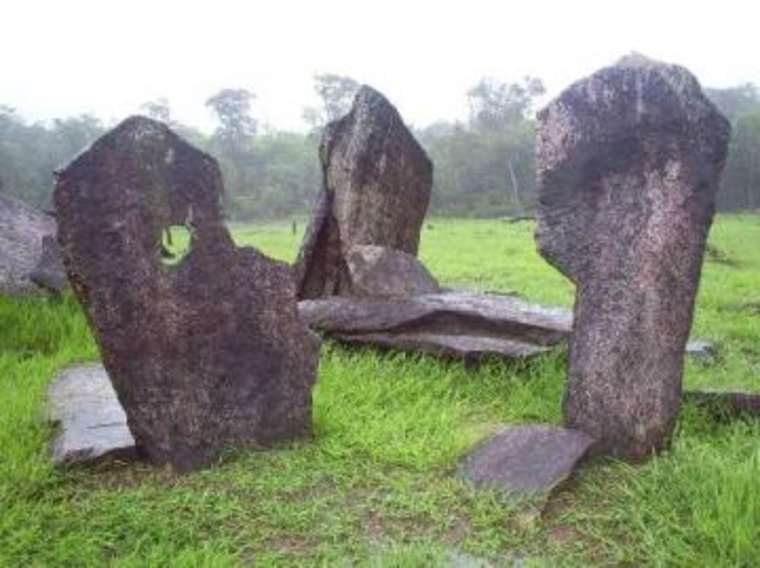
The Amazon Stonehenge, sometimes also referred to as the “Tropical Stonehenge” raises many baffling questions. In 2005, archaeologists began excavation of the site, but a thorough study of the megalithic structures has not yet been conducted.
So far, 20 megalithic structures, 8 burial caves and mound as well as some ancient villages have been discovered.
Calçoene megalithic structures reveal evidence of ancient astronomical knowledge
For most part Amapán megaliths are easily visible, they are located on tops of hills. The stones vary much in size. The megaliths consist of upright or slanted granite blocks in circular arrangements. Some circles are small, less than 10 m in diameter. The largest stone structure has a diameter more than 30 m. The granite stones are rough and simple.
The stones have not been submitted to dating techniques, but carbon-dating of unearthed pottery suggests the site is between 500-2,000-year-old.
Studies of the Amazon Stonehenge reveal that there is a connection between the stone structures and Amapá culture’s interest in astronomy. The Stonehenge comparison with the Amazon discovery is due to the astronomical significance of both sites.
On the winter solstice of December 21, the shortest day of the year in the northern hemisphere, the shadow of one of the blocks disappears when the sun is directly above it. The rock appears to deliberately have been placed at angle so that the shadow is possibly small throughout the day. This particular block’s alignment with the December solstice leads archaeologists to consider the possibility that the site was once an astronomical observatory. During the winter solstice, the sun shines directly though this hole onto another rock for an extended amount of time.
If the stone structure served as megalithic observatory, then it must have been constructed by sophisticated indigenous culture.
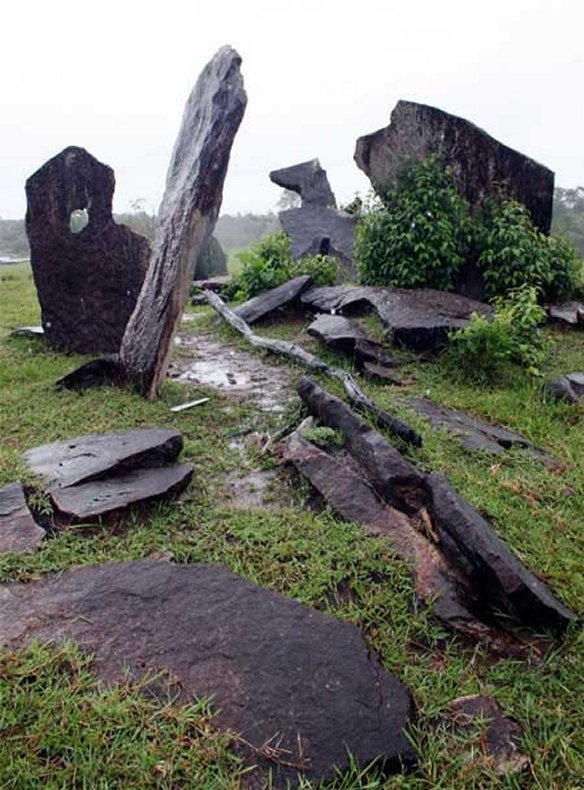
Many of the world’s indigenous peoples are thought to use symbolism of the sky on Earth to harness the power of the celestial world. It would seem that the Amapá megalithic culture was also fascinated with the night sky and celestial bodies.
See also:
Polynesian Stonehenge: Enigmatic Ha’amonga ‘a Maui Trilithon Of Tonga
Was Megalithic Stone Circle Of Mzora The Tomb Of The Giant Antaeus?
Mysterious Megalithic Stones Of Carnac, France – An Unsolved Neolithic Enigma
The Amazon Stonehenge could re-write the ancient history of ancient societies in South America. It is therefore vital that the stones circles are studied in more detail. Scientific examinations of the archaeological sites can provide us with more clues and hopefully answers as to the age of the Amapán megalithic culture and its mysterious disappearance.
Written by Ellen Lloyd – MessageToEagle.com
Copyright © MessageToEagle.com & Ellen Lloyd All rights reserved. This material may not be published, broadcast, rewritten or redistributed in whole or part without the express written permission of MessageToEagle.com and Ellen Lloyd
About the author:
Ellen Lloyd –is the owner of MessageToEagle.com and an author who has spent more than 25 years researching ancient mysteries, myths, legends and sacred texts, but she is also very interested in astronomy, astrobiology and science in general.
She is the author of Voices From Legendary Times.

